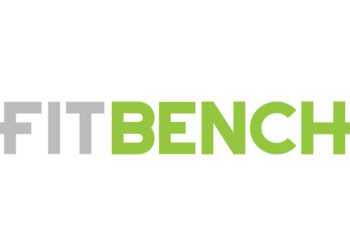 Wellbeats
Wellbeats
There are three specific things we’d like clubs to know about youth fitness:
1. As the rate of childhood obesity continues to soar, youth fitness programs are desperately needed. Children are spending more time “plugged in” to computers and screens, and more than 80 percent of adolescents do not get enough aerobic physical activity to meet health guidelines for youth, according to the President’s Council on Fitness, Sports and Nutrition. Health clubs have a responsibility and an opportunity to help remedy and prevent this epidemic before it causes a lifetime of health problems for our future generation. Fitness programs designed specifically for kids are crucial in the fight against childhood obesity.
2. It is important to remember that kids need to be trained differently than adults. Their bodies, and their attention spans, are not fully developed. Finding a youth program that is stimulating and engaging, kid-inspired and kid-approved, offers program variety and “fun” is key to maintaining a successful ongoing kids program within the club environment!
3. In a world where our kids are sensory bombarded on a daily basis, a successful youth fitness program does more than improve the physical. It offers mental, academic and emotional benefits as well. Being active helps kids turn their brain on, supporting better concentration that will positively affect them in school. Youth fitness also empowers self-esteem, builds self-confidence, individuality, social skills and allows kids to just be kids! It’s never too early to start inspiring kids to be active and develop habits that can last a lifetime!
I do think all clubs should offer some sort of youth fitness offering. As a mother of three, I know what it takes to get kids out the door, make time for yourself without guilt, all while staying motivated to power through your own workout. Almost sounds impossible, right? Well, imagine having your kids inspire you to go to the gym instead of complaining about going and sitting in childcare! Youth fitness programming is creating a healthy and fit family lifestyle that is contagious. When youth start enjoying fitness, they become the role model and fitness leaders for their parents.
Some clubs may have trouble developing youth fitness programing. Making programming convenient and fun for kids of multiple age levels, with lots of variety, can solve this challenge! There are great well-established companies in the industry who have resources in this category. Youth programming that uses tools that aren’t necessarily standardized adult fitness equipment, promotes hand-eye coordination and gross motor skills, but most importantly, turns every session into “exercise in disguise.” When parents see how much their kids enjoy these game-like skills and drills, and interacting with other kids in a non-competitive environment, the program will become successful because the kids will ask for it!
Jen McCook is the creator of MOVE ME!™ and Youth Programming Developer at Wellbeats™, Formerly Fitness On Request. She can be reached at info@wellbeats.com or 888.520.7501.
 Champion Youth Fitness
Champion Youth Fitness
There are three specific things I’d like clubs know about youth fitness:
1. Implementing a youth fitness program will broaden the target market by appealing to families with children.
2. Increasing the percentage of family memberships will raise the average dues revenue or ancillary revenue depending upon how the club chooses to charge for the service.
3. Increasing the percentage of family memberships will improve the club retention rate because the club involves more members of the family in fitness and nutrition.
A key question that a club owner must answer when considering launching a youth fitness program is to determine the best way to charge for the service. I believe both a discounted family membership should be offered as well as a more expensive pay-as-you-go option, which can increase non-dues revenue. In this way, families will be able to test the service, and if their child enjoys it, they can save money by upgrading to a family membership.
It is important to note that not all clubs should offer youth fitness programs. Clubs that have limited space cannot offer a youth fitness program because the service requires a dedicated space for the children and a group exercise floor. Since there are upfront investment costs of the space itself, youth fitness equipment, marketing and staff training, a financial analysis should be completed to project the gross profit and return on investment resulting from the youth fitness program.
Club staff in charge of a youth fitness program should be Red Cross certified and also have a youth fitness personal training certification. The group exercise instructor should have the appropriate certifications, such as Zumbatomic, the kid’s version of Zumba. Martial arts or self-defense instructors should have the appropriate certifications as well, such as an MMA certification.
One final thought for owners to consider as a local service provider: it may be important to be perceived as part of the solution to our youth obesity crisis by offering fitness and nutrition services starting at a young age. Last year, one of my clients invested in youth fitness equipment and indoor play-scape similar to those structures found in many fast food chains in one of his clubs. Soon afterward, he told me that many of his members who are parents thanked him for making the investment and caring about the health of their children. The response has been so positive that he is now incorporating this equipment in his other clubs, thus changing his club’s overall image to a family fitness center.
Paul Bosley is the owner of Champion Youth Fitness. He can be reached at paul@healthclubexperts.com or 561.702.5505.
Stay ahead in the fitness industry with exclusive updates!
Rachel Zabonick-Chonko is the editor-in-chief of Club Solutions Magazine. She can be reached at rachel@peakemedia.com.











